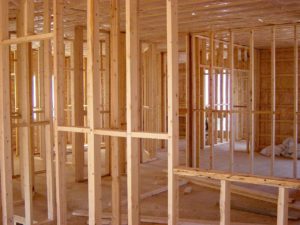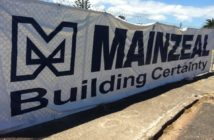Homeowners may not be fully aware of how much it might now cost to rebuild their most valuable asset, CoreLogic says

In just the first two months of 2023 New Zealand has experienced two significant weather events, with the Auckland Anniversary Weekend flooding alone expected to cost more than $1 billion, far exceeding the $350 million in insured losses recorded in 2022, previously the biggest year to date.
As climate change gathers pace, certain regions of New Zealand are forecast to be increasingly susceptible to cyclones, riverine flooding, landslides, bushfires and coastal storm surges.
“A set and forget approach in insurance doesn’t work in times like this,” says CoreLogic’s Head of Insurance Solutions, Matthew Walker.
“We know the importance of having accurate rebuild costs, which is why we are so focused on keeping our costing data as up-to-date as possible. Insurers need to be confident that we are vigilant about covering every aspect that impacts on the cost of rebuilding, so we help them get the right product for their customers.”
Staying current with construction price rises
CoreLogic NZ’s Cordell Construction Cost Index shows the cost to build a ‘standard’ 200-square-metre three-bedroom, two-bathroom single-storey brick-and-tile house hit a new record with an annual increase of 10.4%, the highest since the CCCI commenced in late 2012.
With prices rising so rapidly, CoreLogic Estimation Manager John Bennett says it’s crucial to stay on top of the data.
“Where once we checked prices every three or six months, we now have items we need to check every month. With costs changing so quickly, it’s crucial that we stay on top of the data” he says.
As a member of the Master Builders Association, CoreLogic also has early warning of any changes in national and council building codes that will affect costs.
“We’re not only constantly updating prices for materials but factoring in changes in the building code and advances in building practices, building materials and technology,” he says.
CoreLogic’s Construction Cost data team has constructed 142 digital house models representing about 88% of the builds in NZ. The models incorporate everything from the cost of bricks, windows, paint and labour to professional fees and services such as demolition and waste disposal, and are regularly updated.
A customer or insurer can put in the details of a property, from number of bedrooms to quality of fittings, and get an insured value, based on up-to-date costs to re-build.
Dealing with the impact of the shaky isles
Perhaps the biggest change to the building code came out of a recommendation from the Royal Commission into the 2011 Canterbury earthquakes, in which thousands of properties were impacted by liquefaction of soils.
New regulations for dealing with liquefaction-prone land were initially imposed in Canterbury and extended to the rest of New Zealand in November 2021. Local and regional councils are currently mapping liquefaction hazard areas where construction will require piles to be driven into a solid foundation to increase resilience in the event of an earthquake.
Bennett says the new requirements are adding 5-20% to construction costs.
According to the Insurance Council of New Zealand, rates of non-insurance in here are just 2-4%, but under-insurance is a much bigger concern, for homeowners as well as insurers.
The 2022 CoreLogic white paper on the state of home insurance in New Zealand is based on a survey of 1,014 New Zealand homeowners. It found:
- 30% of homeowners were not confident their property was adequately insured.
- 56% of respondents haven’t reviewed their home insurance in the past year.
- The average New Zealand homeowner last reviewed their home insurance cover nearly 2.4 years ago.
- 52% were guided by their insurer on their level of home insurance.
- 44% were more likely to assess their cover when prompted by their insurer.









